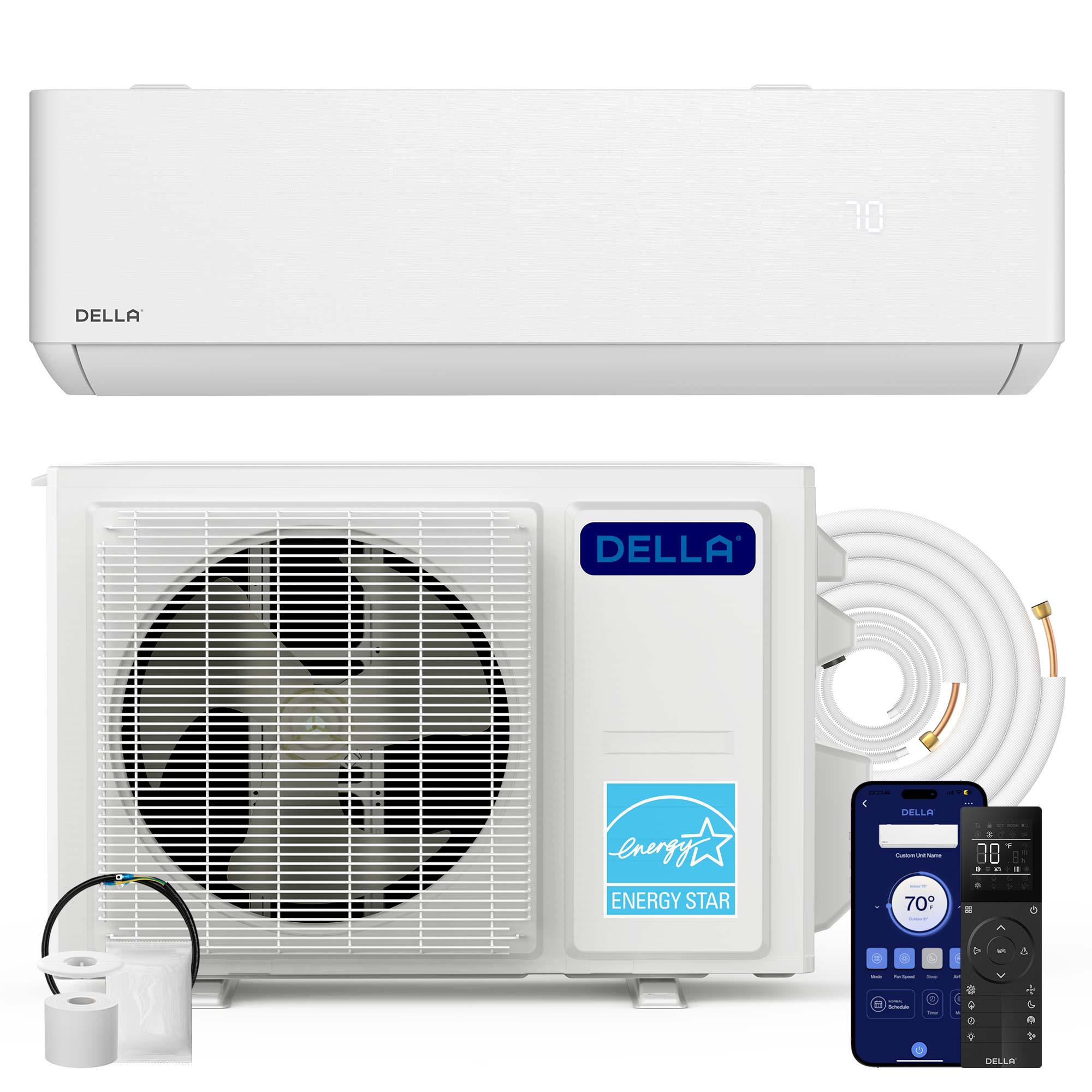What’s the Difference Between a 12,000 BTU Mini Split and Central AC?
When it comes to cooling (and in many cases, heating) your home, two of the most common options are a 12 000 btu mini split system and a central air conditioning system. Both serve the same purpose—keeping your space comfortable—but they do so in very different ways. If you’re deciding between the two, understanding their differences in design, efficiency, cost, and comfort is essential.

How They Work: Mini Split vs. Central AC
A 12,000 BTU mini split AC—often called a ductless system—consists of an indoor air handler and an outdoor condenser. The two are connected by refrigerant lines and electrical wiring. Because mini splits are ductless, they deliver conditioned air directly into the room.
On the other hand, central AC relies on a single outdoor unit and a network of ducts that distribute cool air throughout the house. This means one system can cool multiple rooms at once, but it also requires extensive ductwork.
Installation Differences
-
Mini Split Installation: Installing a 12,000 BTU mini split usually takes half a day to a full day for a single zone. No ductwork is needed, just a small wall opening for refrigerant lines. This makes mini splits ideal for older homes without ducts, apartments, or room additions.
-
Central AC Installation: Installing central AC is more complex, often requiring several days, especially if new ductwork must be added. Homes with existing ducts see shorter installation times, but costs can still be higher.
Energy Efficiency
One of the biggest differences lies in energy efficiency.
-
12,000 BTU Mini Split: These units typically offer high SEER ratings (20+ in many models) thanks to inverter technology, which adjusts compressor speed to meet demand. The ductless design eliminates up to 30% energy loss associated with leaky or poorly insulated ducts.
-
Central AC: Central systems usually have SEER ratings between 14 and 16, making them less efficient. Energy is often wasted cooling unused rooms and through duct leakage.
Comfort and Temperature Control
-
Mini Split Comfort: Mini splits provide zoned cooling, meaning you can set different temperatures in each room with its own indoor unit. This ensures personalized comfort and reduces wasted energy.
-
Central AC Comfort: Central air cools the entire home at once. While this is convenient, it means you can’t easily adjust temperatures for individual rooms without adding zoning systems, which increases costs.
Noise Levels
-
Mini Split Systems: Known for their quiet operation, most indoor units produce less than 30 decibels, similar to a whisper. This makes them excellent for bedrooms, offices, and small living spaces.
-
Central AC Systems: While central units aren’t extremely loud, the air handler and ducts can create noticeable noise, especially when airflow is strong.
Cost Comparison
-
Upfront Cost: A 12,000 BTU mini split typically costs $1,500–$3,500 installed for a single room. Central AC installation for an entire home ranges from $4,000–$8,000 or more, depending on size and ductwork.
-
Operating Costs: Mini splits usually save more on monthly energy bills because they avoid duct losses and allow zoned usage. Central AC may cost more to run since it cools the whole house, even unused rooms.
Lifespan and Maintenance
-
Mini Split: With proper care, a mini split system lasts 15–20 years. Maintenance involves cleaning filters, checking refrigerant levels, and occasional servicing of the outdoor unit.
-
Central AC: Central systems also last about 12–15 years, but duct cleaning and maintenance add to the upkeep.
Which One Is Right for You?
-
Choose a 12,000 BTU mini split AC if:
-
You want to cool a single room or zone efficiently.
-
Your home lacks ductwork or you’re adding a new space.
-
You prioritize lower energy bills and quiet operation.
-
-
Choose central AC if:
-
You want whole-home cooling from one system.
-
Your home already has ducts in good condition.
-
You prefer a traditional, hidden system without multiple indoor units.
-
Conclusion
The difference between a 12,000 BTU mini split and central AC comes down to flexibility, efficiency, and scale. Mini splits shine in smaller spaces, older homes, or when energy savings are a top priority. Central AC remains a solid option for whole-home cooling if ductwork is already in place.
Ultimately, the best choice depends on your home’s design, comfort preferences, and budget. For many homeowners, combining both systems—central AC for the main home and mini splits for additions or problem areas—offers the perfect balance.
Post Comment